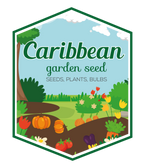
Oxkutz cabian Orange Chili,Pepper SEEDS - Capsicum chinense
- Get free shipping to lower 48 states on orders $54.95+ (Most Items), excluding live plants, plant bulbs, and black plastic nursery crate.
- Most orders are processed by the next day !
- Safe Seed Pledge
- Select your desired size and/or color from the available options.
- C.Chinenese
- SHU 100,000-300,000
The habanero species is thought to originate in the Yucatan region in Mexico. Although the name "habanero" can be translated to mean "someone or something from Havana", the plant is only found growing in isolation on the island of Cuba. Even today, it is primarily grown on the Yucatan peninsula, however it is predominantly orange and yellow habanero varieties grown here.
The red variant usually comes from the Caribbean or the southern states of the USA. The thin-walled fruits are round, wrinkled and grow to be approximately 5cm long and 3cm wide. Their shape is similar to that of a mini pepper. They have such an intensely fruity flavor, that many other types of chili find it very difficult to compete with the habanero pepper.
Their tropical, fruity flavor makes them an essential ingredient in every salsa and means they can be paired particularly well with tropical fruits. The color changes from pale green to orange. The plants produce a large number of medium-sized orange fruits.
Sow seeds indoors ¼" deep. Peppers germinate best in warm soil, so gentle bottom heat may be helpful until seedlings emerge. Wait to transplant outdoors until soil is warm.Pepper varieties come from tropical humid regions. The temperature, moisture, and air circulation all play a role in growing plants from seeds. Too little heat, too much moisture, and lack of air circulation will cause poor results. Do not use jiffy peat pots, plugs, or potting soil as the soil becomes too dry or too wet, which can lead to disease and fungus. We have experienced disease and low germination when using these types of products. Use Organic Seed Starting Material for best germination results.
Peppers often like to take their sweet time germinating. They can be up in a week, and some will take almost a month. Even with paper towel germination testing, they can take long. I am not sure why, but it is a normal occurrence. So plan and make sure you start them early enough! Also, remember they like heat to germinate so make sure you have a heating mat or something to keep the soil warm. Placing them up on top of the fridge often works too since it is normally warmer up there.
Growing Peppers:
Peppers, like tomatoes, grow in well-drained fertile soil. Almost all peppers have the same requirements for successful growth. Plant them in good, well-drained, fertile soil â and make sure they get lots of sunlight and a good inch of water per week. In many ways, they mimic the same requirements needed for growing great tomatoes.
At Planting Time:
We plant all of our peppers with a good shovel full of compost in the planting hole, and then give them a good dose of compost tea every few weeks for the first 6 weeks of growth. We also mulch around each of our pepper plants with a good 1 to 2’’ thick layer of compost.
LET OUR CUSTOMER SPEAK FOR US

![[Seeds] - Caribbeangardenseed](http://caribbeangardenseed.com/cdn/shop/files/gift-card-gift-card-1_1024x1024_dfa857db-9150-4315-a362-7f0bb3fb9c47_60x28.png?v=1722895789)






